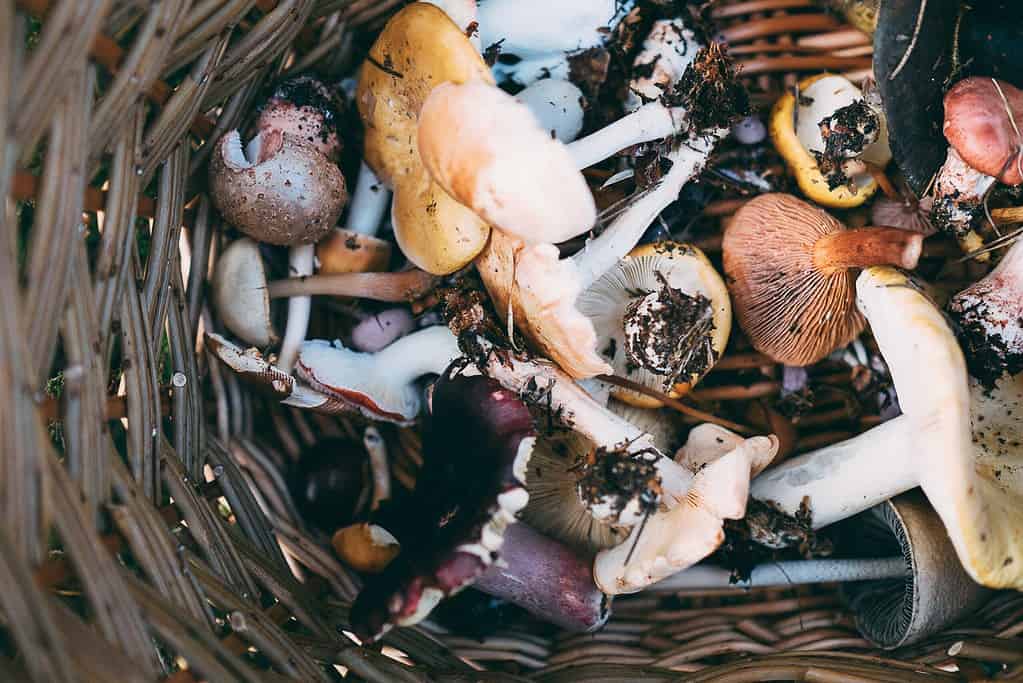
Foraging is an ancient practice that has recently gained popularity among people who are interested in sustainable living and reconnecting with nature.
Foraging is the act of gathering wild foods, including mushrooms, fruits, nuts, and greens, from their natural habitat. Humans have been doing this since the early days of our species, but remarkably, we’ve recently forgotten how to forage.
We’re far less connected to the nature and environments around us than ever before in our history. But that doesn’t mean we can’t enjoy and appreciate nature. Whether you live in an urban or rural area, whether you live in the southern or northern hemisphere, there’s always something you can forage for!
Before we discuss anything, please please be careful if you do decide to forage anything. Don’t pick anything you’re not 100% certain of. Don’t rely on friends or things you read online — and this includes this article.
This is simply meant to be a general guide on foraging, but please always ensure the safety of anything you forage.
Why Forage
Foraging is not only a fun and exciting way to connect with nature, but it can also be a way to save money and reduce your carbon footprint. When you forage, you are getting your food from the local environment, which means that you’re not contributing to the environmental impact of mass-produced foods that are shipped across the country or even across the world.
Foraging can also be a way to learn more about the local ecosystem and the plants and animals that live in it. When you forage, you learn to identify different plants, animals, and fungi that are native to your area. You also learn about the seasons and the natural rhythms of the environment.

Think of it this way: it’s kind of like fishing or hunting, but better. You’re not hurting anyone or anything. You’re not sitting around in a boat or by a lake — you’re walking about and exploring. You’re immersing yourself in nature rather than hurting it.
Lastly, foraging is also a way to reconnect to our ancestral lifestyle. Humans have been gathering fruits, vegetables, and mushrooms since humans have existed. It’s just so damn satisfying to eat something you find yourself.
Rules for Staying Safe
Foraging can be a safe activity if you take the right precautions. Here are some rules to follow to ensure your safety while foraging:
- Always identify the plant or mushroom you are about to eat. Many wild plants and mushrooms are poisonous and can cause severe illness or death. Bring a field guide with you or learn how to identify the plants and mushrooms in your area before you go out. Only pick plants, fruits, and mushrooms that you can positively identify.
- Never eat a plant or mushroom that you are not sure about. If in doubt, leave it out. Seriously, this is rule number zero.
- Only pick plants and mushrooms that are in good condition. Avoid picking plants that are diseased or infested with insects.
- Respect the environment and wildlife. Don’t damage plants or disturb wildlife when foraging. Leave the area as you found it.
- Follow local laws and regulations. Some areas have restrictions on foraging, so make sure you know the rules before you start.
- Avoid areas that have been sprayed with pesticides or other chemicals. The same goes for areas that have a lot of pollution.
- Don’t forage alone. Go with a friend or a group. This is not only safer, but also way more fun.
- Wear long pants, sleeves, and gloves to protect yourself from thorns, insects (especially ticks) and other things. Use the right boots. Wear comfortable, safe things.
- Let someone know where you’re going and when you expect to be back.
- Do your homework. You never really know what you’ll encounter, but familiarize yourself with an area before you go there. Think about what you can expect to find and try to prepare beforehand.
- Bring food and water. Don’t rely on what you’ll find. Water, in particular, should always be available.
- Use sunscreen.
I know, I know: this sounds like a drag. All you want to do is go outside and find yourself something to forage. But trust me: if you pay a little bit of attention and just take basic precautions, you’ll have a much better time. Now, on to the foraging.
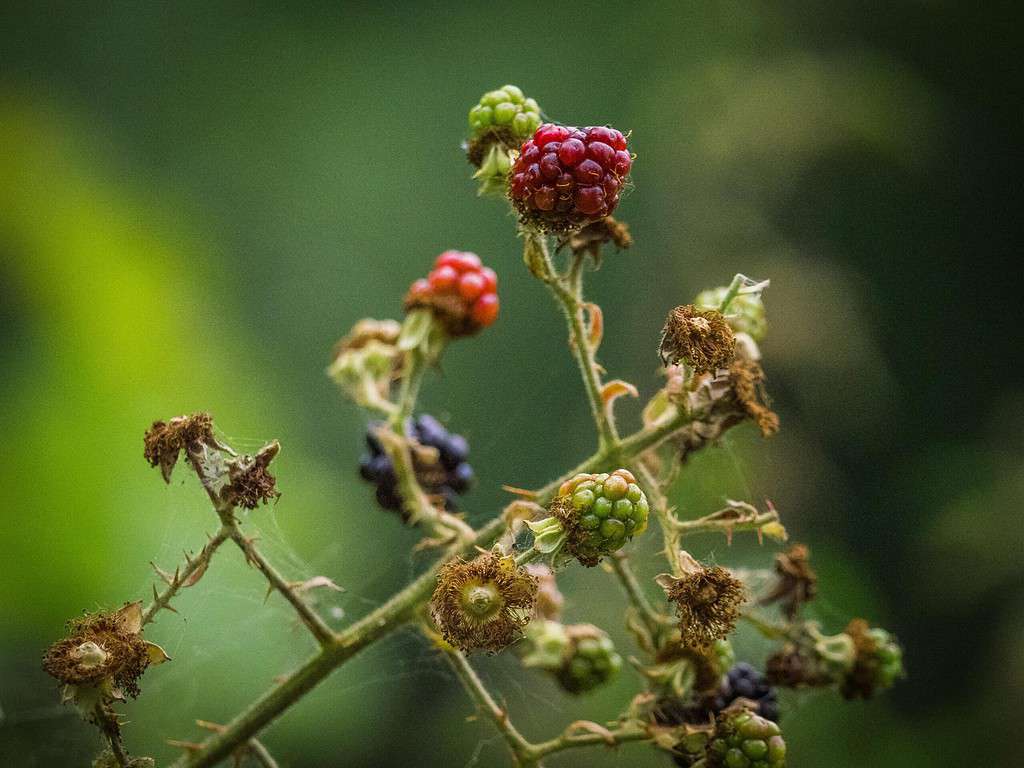
Foraging for Mushrooms
Mushroom foraging is a popular activity, but it’s essential to know what you’re doing. Some mushrooms are toxic and can cause serious illness or death. In fact, foraging for mushrooms is probably where you have to pay the most attention.
Here are some tips for mushroom foraging:
- Learn how to identify the mushrooms in your area. There are many different types of mushrooms, and some are toxic, so it’s crucial to learn how to identify them properly. Use books and apps. Be careful: a lot of mushrooms look alike, and delicious ones sometimes look like toxic ones.
- Start with easy-to-identify mushrooms, such as morels or chanterelles. If there are other common mushrooms in your area, learn to identify those. If you’re unsure what’s in your local area and the internet isn’t helping you, go to a local farmer’s market and ask the people selling mushrooms.
- Learn to identify poisonous mushrooms, such as the death cap or the destroying angel. Again, focus on those common in your area.
- If you go out and aren’t sure what to eat and are having trouble, follow a mushroom identification workshop. There are usually some of those around.
- If you’ve found something you think is good but are unsure — leave it. Or bring it home and ask an expert, but don’t eat it. You can email local experts and ask them.
- Don’t eat any mushroom raw. Cook them thoroughly.
- Pick mushrooms that are in good condition.
- Don’t collect mushrooms in polluted areas or areas that have been sprayed with chemicals. This is mostly a problem for urban areas, but you’d be surprised in some rural areas as well.
- Carry a mushroom knife or scissors. This will help you to cut the mushrooms cleanly and avoid damaging the surrounding area.
- Cut, don’t pull — Pulling up the roots stops them from regrowing. If you cut mushrooms, they’ll likely grow back next year.
- Take only what you need. Leave the rest for other foragers and for the ecosystem.
- Be mindful. Unlike our ancestors, you’re not doing this to survive. So enjoy the experience, be mindful of the nature around you, and be thankful for what you find.
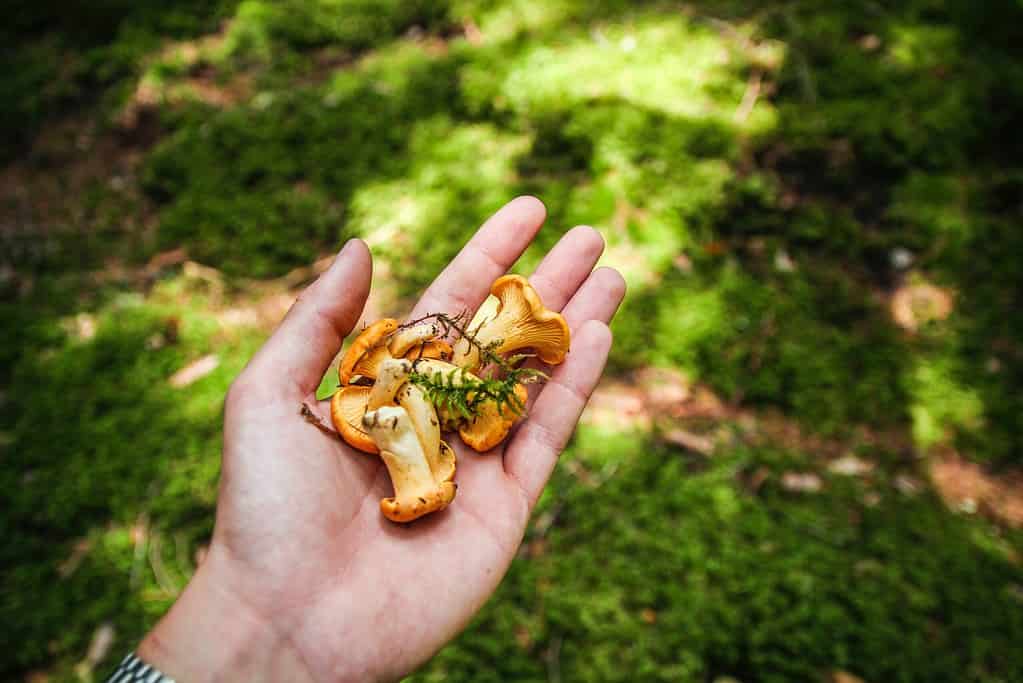
The mushrooms you may find in your area can vary drastically from one spot to the other. It’s impossible to discuss all of them here. However, here are some of the more common mushrooms you may find, at least in the US or Europe (which are the areas I’m more familiar with):
- Morel mushrooms
- Chanterelle mushrooms
- Hen of the Woods mushrooms
- Lobster mushrooms
- Chicken of the Woods mushrooms
- King Bolete mushrooms
- Oyster mushrooms
- Black Trumpet mushrooms
- Lion’s Mane mushrooms
- Matsutake mushrooms
- Porcini mushrooms
- Truffle mushrooms
- Hedgehog mushrooms
- Wood Blewit mushrooms
- Shaggy Ink Cap mushrooms
- Horn of Plenty mushrooms
- Fairy Ring mushrooms
- Parasol mushrooms
- Caesar’s mushroom
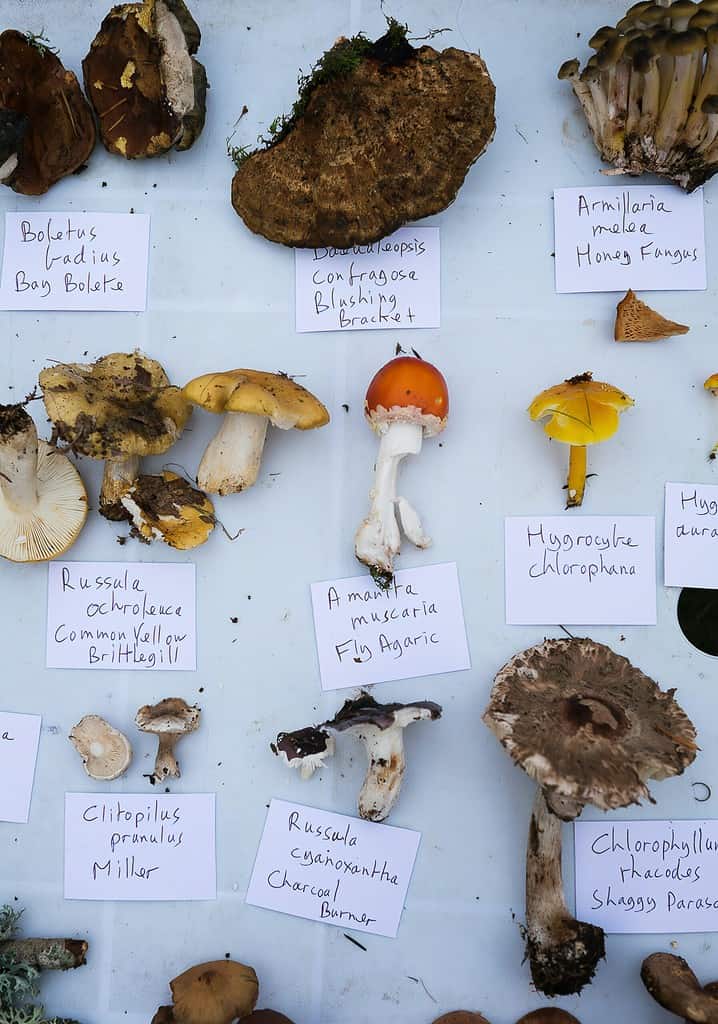
Foraging for Fruits
Foraging for fruits is a fun and rewarding activity. There’s also less risk involved than with mushrooms. Mind you, there are still fruits that can be poisonous, but if you pay a bit of attention, you should have a much easier time.
Here are some tips for fruit foraging:
- Learn how to identify the fruits in your area. Different fruits ripen at different times, so it’s essential to know when to look for them.
- Only pick fruits that are ripe. Unripe fruits may be bitter or even toxic.
- Be careful not to damage the tree or bush when picking fruit. Use a gentle touch and a pair of pruning shears to avoid damaging the plant.
- Only pick fruits that are ripe and free from mold, bruises, or other signs of decay.
- Don’t take more than you need. Leave some fruits for other foragers and for wildlife.
- Don’t eat any fruit that has a bitter taste or a milky sap.
- Be careful when picking berries, as some can be poisonous, such as the deadly nightshade or the pokeweed.
- Avoid fruits that grow near roads or other areas that may have been sprayed with chemicals.
Yet again, there’s a near-endless variety of fruits you can forage, but here are some of the more common ones you may stumble across:
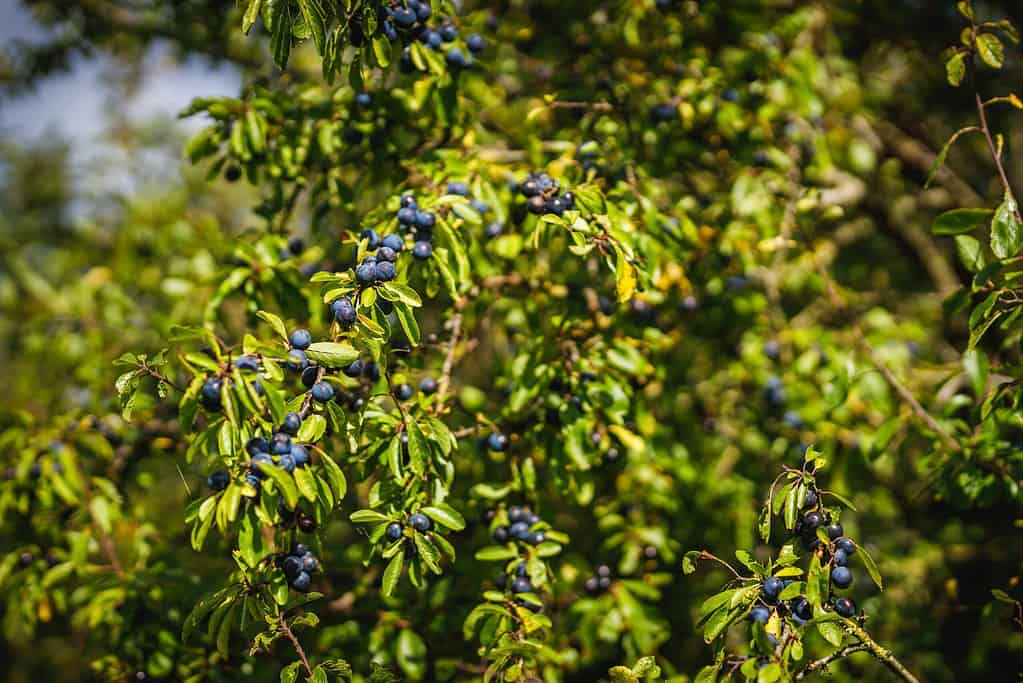
- Blackberries
- Raspberries
- Blueberries
- Strawberries
- Elderberries
- Huckleberries
- Apples
- Pears
- Plums
- Mulberries
- Cherries
- Grapes
- Persimmons
- Figs
- Crabapples
- Serviceberries
- Rose hips (technically not a fruit, but can be used as one)
Foraging for Greens
Foraging for greens is a great way to add variety to your diet. You’re likely to have a harder time foraging for greens than foraging mushrooms or fruits, but you still have a good chance of finding some nice stuff if you get a bit lucky.
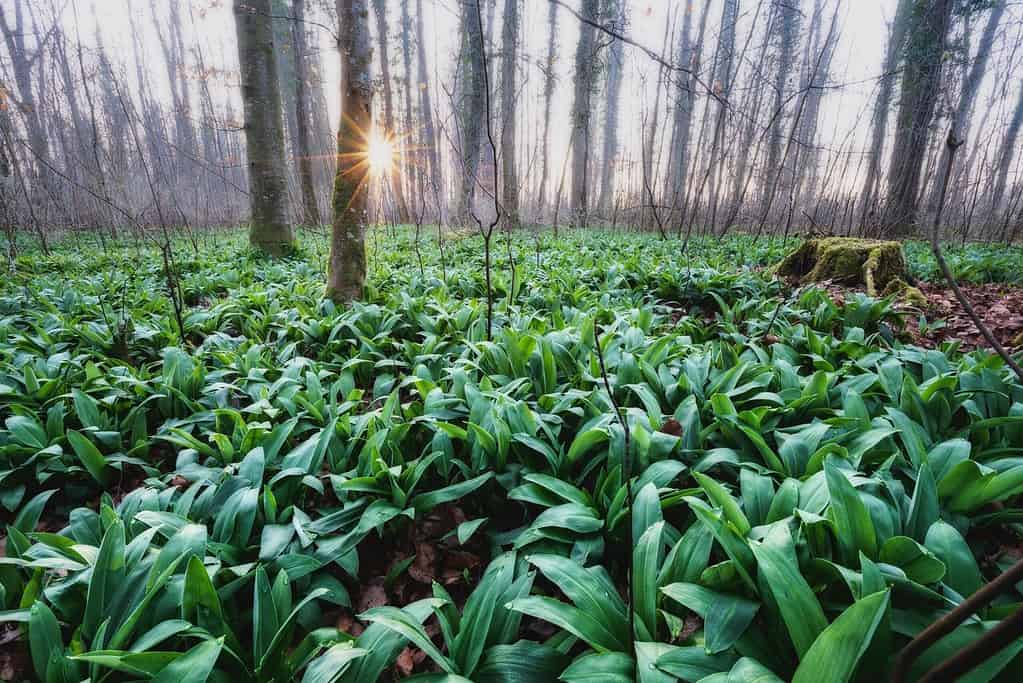
Here are some tips for green foraging:
- Learn how to identify the greens in your area. Many wild greens are edible, but some are poisonous, so it’s crucial to learn how to identify them properly.
- Only pick greens that are in good condition. Greens that are wilted or damaged can cause illness.
- Avoid picking greens from areas that may have been contaminated with pollutants or pesticides.
- Only pick greens that are in good condition. Greens that are wilted or damaged can cause illness.
- Don’t take more than you need. Leave some greens for other foragers and for wildlife.
- Don’t take more than you need. Leave some greens for other foragers and for wildlife.
Foraging for greens is also probably where you can get the most creative. You’d be surprised to see just how many things around you can be consumed and are actually delicious. From the stinging nettles to wild garlic, ramp, and dandelions, there’s an endless stream of greens you can forage.
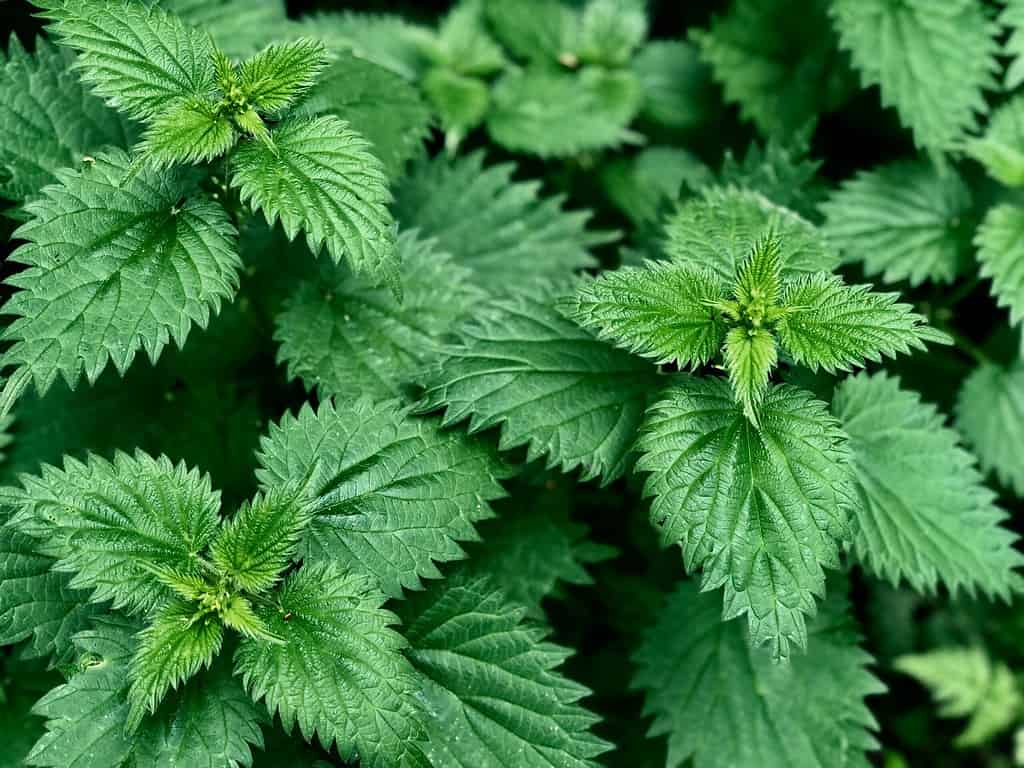
Yet again, here are some of the most common greens you can forage:
- Dandelion greens
- Nettles
- Purslane
- Miner’s lettuce
- Lamb’s quarters
- Sorrel
- Chickweed
- Wood sorrel
- Wild garlic
- Wild onions
- Watercress
- Wild mustard
- Fiddleheads (young ferns)
- Cattail shoots
- Burdock root
- Wild asparagus
- Wild lettuce
Recommendations for Foragers
Foraging can be a fun and rewarding activity, but it’s important to do it responsibly. Here are some recommendations for foragers:
- Always ask for permission before foraging on private land. Some landowners may have restrictions on foraging, and it’s essential to respect their property rights.
- Join a local foraging group or take a foraging class. This will help you to learn more about the plants and mushrooms in your area and meet other like-minded people.
- Don’t forage in protected areas or areas that are important for wildlife conservation. These areas are often off-limits to foragers, and it’s essential to respect their ecological value.
- Always leave the environment as you found it. Avoid damaging plants or disturbing wildlife.
- Be mindful of the impact of your foraging on the environment. Don’t take more than you need and avoid areas that may have been impacted by pollution or other environmental issues.

Foraging is a fun and sustainable way to connect with nature and enjoy fresh, local foods. With the right precautions and knowledge, anyone can become a successful forager. Whether you’re looking for mushrooms, fruits, nuts, or greens, there are plenty of opportunities to explore the local ecosystem and discover new foods. Just remember to follow the rules and recommendations for safe and responsible foraging.



